Genre: Puzzle Developer: Micronet Publisher: Micronet Players: 1 Released: 1990
Junction is an interesting release. I found a copy at a thrift shop once, and while I had never heard of it, it looked interesting. The box gave nothing away about the gameplay at all, so I picked it up and said “what the heck.” I got home and didn’t know what to expect, so I looked it up in the Digital Press Guide and found it to be rather rare, which makes all the more sense as to why it’s so unknown.
The game is called Junction of all things, and the name alone doesn’t surrender any information about how the game plays. Moreover, the front cover of the box has a random and abstract picture that has nothing to do with the game at all, and the bottom says “H Rated. High level of intellect needed to complete this game,” which also says nothing either. So I turn the box over and the entire description of the game reads “simple to learn, impossible to master,” the exact quote from an Othello board game box. Worse yet, there are three screen shots – one shows an actual game screen shot, and the other two are just background images seen during gameplay without any game board present. Needless to say, I had no idea what I was in for. I’ll blame all this game’s obscurity on Micronet’s marketing stupidity since simply giving it a better case design probably would have helped the game sell much better.
Junction is a unique logic puzzle blend, and anyone of you who’ve played Happy Trails or Locomotion on the Intellivision or Timeball on the TurboGrafx-16 will understand what’s going on here. Imagine one of those old sliding block puzzles found on old DOS-based PCs, except not with a picture but paths on each one. There is a marble that keeps rolling, you have to slide the pieces around to keep the path going. On the edges of each game board there are little white wings with paths on each one, and the object of the game is to get the ball to roll over each wing, which makes them disappear. When each one is gone then the stage is completed.
It gets far more complicated than you could ever imagine, and there are constantly new obstacles introduced to new stages – anything from loops that send the ball in random directions to ramps that launch the ball. There are even unmovable tiles. It gets really confusing but stays pretty addicting across the game’s fifty stages. You can speed up or slow down the speed of the ball during each stage, and you’ll have to master all of these aspects to get anywhere past the first ten stages.
Junction gave me more than one brain overload but never became grating or boring once. Many times I had to turn it off and give it a break, but I could always come back to it again. The game is helped by a stellar soundtrack which changes after every ten stages completed. The first and third tunes are some of my new favorites on the Genesis, and they are quite worth ripping and having just to listen to when you want. The backgrounds also change every ten stages. The first one, an Oceanside, is very pleasant and relaxing and helps give the game a nice pace. The second background is a build of and old airplane, and after that they all become abstract. You have to see it to understand, but it all flows together seamlessly to create a great experience.
Junction is an excellent game, and I fell in love with it as soon as I played it, but it’s not for everyone. It’s quite difficult to figure out how to complete some of those stages even early on. One nice thing is that if you get too stuck you can just go into the options and pick another stage. If you don’t have the patience for puzzle games then I’d say this isn’t for you, but if you like puzzle games in general then you’re sure to have a blast.
SCORE: 8 out of 10

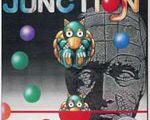
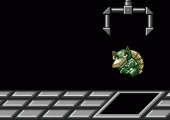
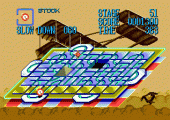
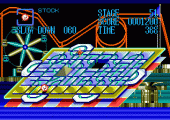
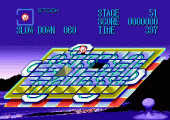
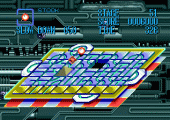
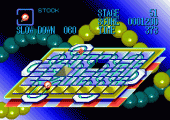
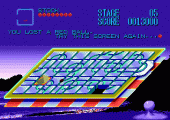
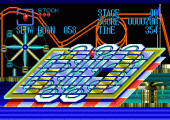
Recent Comments